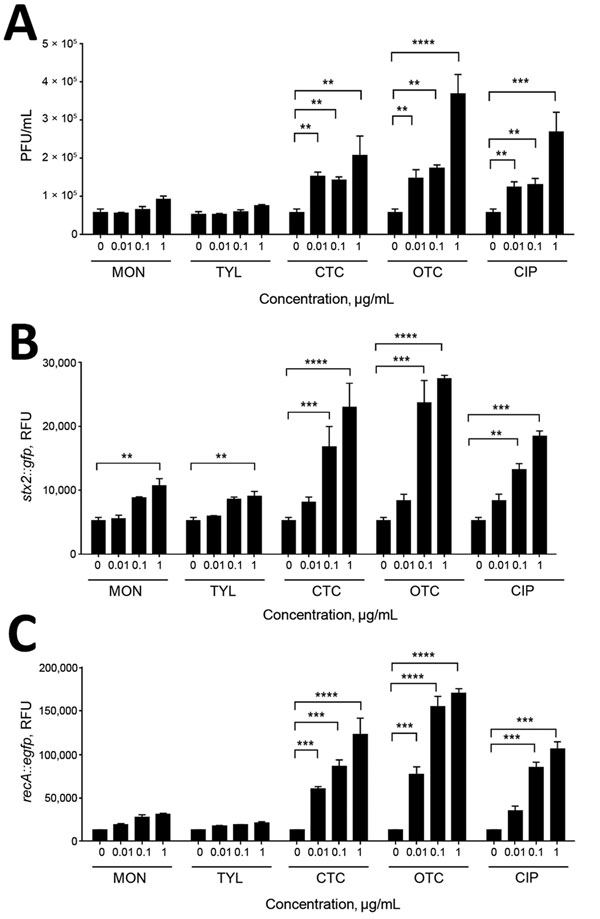Volume 22, Number 5—May 2016
Research
Expansion of Shiga Toxin–Producing Escherichia coli by Use of Bovine Antibiotic Growth Promoters
Figure 1

Figure 1. Induction of Shiga toxin (Stx)2 phage propagation and SOS response by bovine antibiotic growth promoters (bAGPs). A) Stx2 phage induction in Escherichia coli O157:H7 EDL933 after 3 h exposure to subtherapeutic concentrations of bAGPs, including monensin (MON), tylosin (TYL), chlortetracycline (CTC), and oxytetracycline (OTC). Ciprofloxacin (CIP) was a control for phage induction. E. coli C600 was used as a phage-susceptible strain. B) Induction of stx2 expression by bAGPs. Fluorescence from an stx2::gfp transcriptional fusion indicates the level of Stx2 phage induction. C) Induction of recA transcription by bAGPs. The level of recA expression indicates the level of SOS response induction. The results show means and SDs of 3 independent experiments. Statistical significance was analyzed by using the Student t-test. **p<0.01, ***p<0.001, ****p<0.0001.